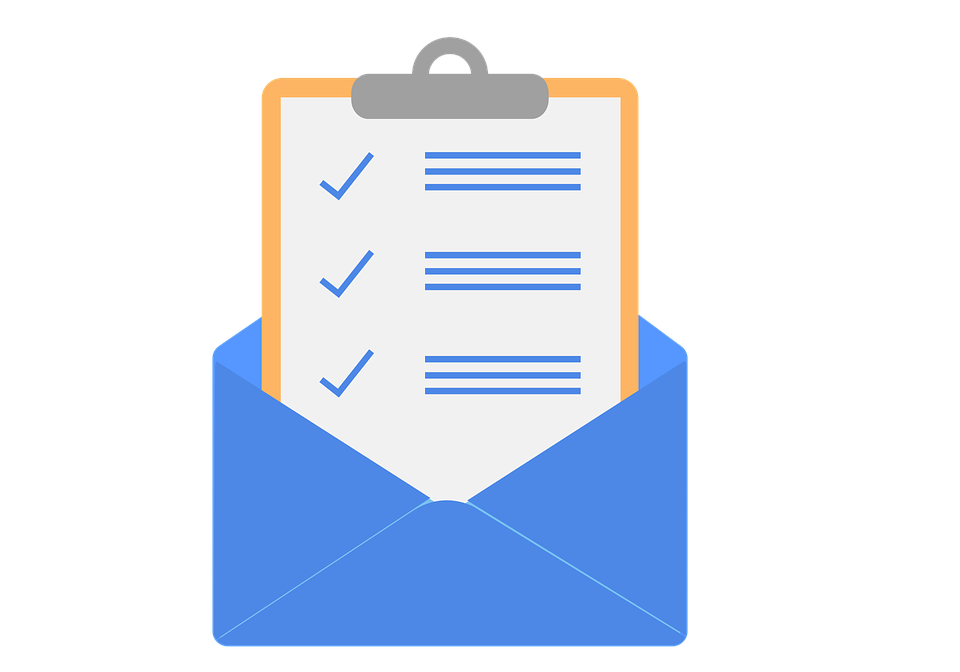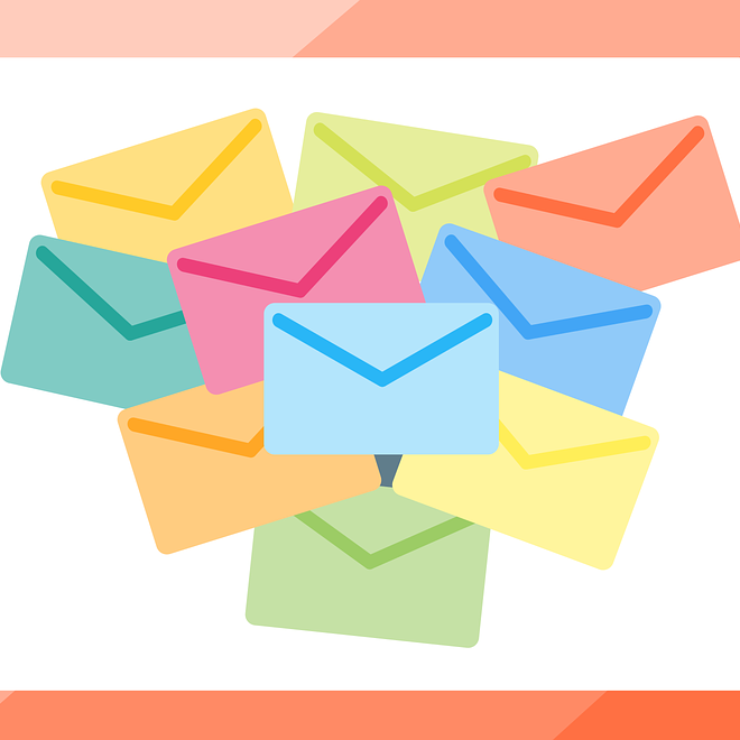In today’s digital age, email marketing remains one of the most effective and affordable ways for businesses to connect with their audience, promote their brand, and drive sales. However, in order to reap the benefits of email marketing, you first need to build a high-quality email list. With more and more businesses vying for people’s attention and inbox space, growing your email list can be a daunting task. But fear not!
In this article, we’ll explore some of the top ways to grow your email list, from optimizing your signup forms and offering lead magnets to leveraging social media and hosting contests. Whether you’re a small business owner or a seasoned marketer, these tips will help you attract more subscribers and build a loyal audience for your email marketing campaigns.
What is An Email List?

An email list is a collection of email addresses and other contact information (such as names and sometimes other demographic data) that a business or organization has compiled from people who have voluntarily given their information in order to receive communications from that business or organization. Typically, email lists are used for email marketing purposes, such as sending newsletters, promotional offers, or other types of content to subscribers who have opted in to receive them.
An email list can be one of the most valuable assets of a business or organization, as it provides a direct line of communication with interested and engaged subscribers. However, building and maintaining a high-quality email list requires a thoughtful approach, as it’s important to respect subscribers’ privacy and preferences and avoid spamming or sending irrelevant content. Successful email marketing campaigns rely on having a targeted, engaged email list that is receptive to your messaging and interested in what your business has to offer.
Creative Ways to Grow Your Email List
Email List Building Tip #1- Offers Lead Magnets and Incentives
Offering lead magnets and incentives is a popular tactic for attracting new subscribers and growing your email list. Here’s a breakdown of what these terms mean and how to use them effectively:
Examples of lead magnets: A lead magnet is a valuable piece of content or resource that you offer to your website visitors in exchange for their email address. Examples of lead magnets include e-books, whitepapers, webinars, free trials, discount codes, checklists, and more. The key is to offer something that is relevant, useful, and high-quality, and that addresses a specific pain point or problem that your target audience is facing.
How to create a compelling offer: To create a lead magnet that resonates with your target audience, you need to understand their needs, preferences, and challenges. Start by researching your target audience and identifying their pain points, goals, and interests. Then, brainstorm ideas for lead magnets that address these needs and provide value. When creating your offer, focus on creating an eye-catching design, a compelling headline, and persuasive copy that clearly communicates the benefits of your lead magnet.
The importance of aligning your offer with your overall marketing strategy: Your lead magnets should be aligned with your overall marketing strategy and business goals. For example, if your goal is to sell more of a particular product or service, you might offer a free trial or demo of that product as your lead magnet. Or, if your goal is to establish thought leadership in your industry, you might offer an e-book or whitepaper that showcases your expertise. By aligning your lead magnets with your broader marketing objectives, you can attract the right subscribers and nurture them into loyal customers over time.
Email List Building Tip #2 – Optimize Your Signup Forms

Optimizing your signup forms is an essential component of growing your email list and converting website visitors into subscribers. Here are some explanations of the terms you provided:
Best practices for designing signup forms that convert:
To design signup forms that convert, you need to make sure they are visually appealing, easy to understand, and have a clear value proposition. Use contrasting colors for your form and call-to-action (CTA) buttons, and use clear, concise language to communicate the benefits of subscribing. You can also try testing different variations of your forms to see which ones perform better.
Where to place signup forms on your website for maximum visibility:
You want to place signup forms in prominent locations on your website where they are most likely to be seen by your visitors. Consider placing forms in the header or footer of your website, in the sidebar of your blog or content pages, or as a pop-up or slide-in that appears after a user has spent a certain amount of time on your site. Be careful not to make your forms too intrusive or disruptive to the user experience, as this can be counterproductive.
Tips for minimizing friction and making the signup process as easy as possible:
Friction in the signup process can discourage visitors from completing the form and subscribing. To minimize friction, make sure your form fields are easy to fill out and only require the most essential information. You can also use autofill features to pre-populate fields when possible. Avoid making visitors create an account or go through multiple steps to complete the signup process. Consider providing an incentive for signing up, such as a discount or free download, to encourage visitors to take action.
Email List Building Tip #3 – Leverage Social Media

Here are explanations of the terms related to leveraging social media for growing your email list:
Strategies for promoting your email list on social media platforms: This involves using social media channels such as Facebook, Twitter, LinkedIn, and others to promote your email list to your followers and connections. This can include creating posts that highlight the benefits of subscribing to your email list, adding links to your sign-up page in your social media profiles, and using targeted hashtags to reach potential subscribers.
The benefits of using paid social media advertising to grow your list: Paid social media advertising involves creating targeted ads on social media platforms to reach specific audiences. By using paid advertising to promote your email list, you can increase the visibility of your sign-up page and reach a wider audience of potential subscribers. The benefits of paid advertising include more targeted reach, more precise tracking, and the ability to optimize your ads for better results.
How to track and measure the effectiveness of your social media campaigns: Tracking and measuring the effectiveness of your social media campaigns involves using analytics tools to gather data about how your campaigns are performing. This can include tracking metrics such as the number of clicks on your sign-up page, the number of new subscribers generated by your campaigns, and the conversion rate of your ads. By monitoring these metrics, you can identify areas for improvement and optimize your campaigns for better results.
Email List Building Tip #4 – Host Contests and Giveaways

Host Contests and Giveaways are marketing tactics that businesses use to engage with their audience and incentivize them to sign up for their email list. Here’s a breakdown of each point you’ve mentioned:
Ideas for contests and giveaways that encourage email signups: There are many different types of contests and giveaways that businesses can run to encourage people to sign up for their email list. For example, you could offer a prize for the best photo or video submission, or host a quiz or poll with a prize for the winner. The key is to make sure the prize is valuable enough to entice people to sign up, while still being relevant to your target audience.
Tips for promoting your contests and generating buzz: To make the most of your contests and giveaways, you need to promote them effectively. This can include leveraging social media platforms, creating ads, and reaching out to influencers or bloggers in your industry to help spread the word. You can also create a landing page dedicated to the contest or giveaway, which provides more information about the prize and encourages people to sign up for your email list.
How to follow up with new subscribers and keep them engaged after the contest is over: Once the contest or giveaway is over, it’s important to follow up with new subscribers and keep them engaged. This can include sending a welcome email that introduces your brand and provides more information about your products or services, as well as providing ongoing value through your email marketing campaigns. By keeping your subscribers engaged, you can build a loyal following and drive more conversions for your business.
Email List Building Tip #5 – Use Pop-Ups and Slide-Ins
Pop-ups and slide-ins are two common types of opt-in forms that are used to capture email addresses from website visitors. Here’s an explanation of each term, as well as some tips for using them effectively:
Pop-ups: Pop-ups are opt-in forms that appear over the top of the website content, usually after a certain period of time or when a user performs a specific action (such as scrolling down the page). Pop-ups can be effective for capturing attention and getting visitors to sign up for your email list, but they can also be annoying if they’re overused or poorly designed.
Slide-ins: Slide-ins are opt-in forms that appear from the side or bottom of the screen, usually when a user scrolls to a certain point on the page. Slide-ins are less intrusive than pop-ups, but they can still be effective for capturing attention and increasing email signups.
When using pop-ups and slide-ins to capture email addresses, it’s important to design them in a way that doesn’t disrupt the user experience. Here are some best practices to keep in mind:
- Use clear and concise copy that explains the benefits of signing up for your email list
- Offer an incentive, such as a free resource or discount, to encourage signups
- Make the opt-in form easy to fill out, with as few fields as possible
- Test different designs and placement options to see what works best for your audience
It’s also important to balance the benefits of increased signups with the potential downsides of annoying your visitors. Here are some tips for avoiding user frustration:
- Set a reasonable frequency for pop-ups and slide-ins (e.g. once per visit or once per week)
- Allow visitors to easily close or dismiss the opt-in form if they’re not interested
- Use targeting options to show the opt-in form to visitors who are most likely to be interested in your offer
By using pop-ups and slide-ins strategically and thoughtfully, you can increase your email signups without alienating your website visitors.
Email List Building Tip #6 – Collaborate with Other Brands and Influencers

Collaborating with other brands and influencers is a powerful way to grow your email list. Here’s a breakdown of what it entails:
Ideas for partnering with other brands and influencers to grow your email list:
Partnering with other brands or influencers can help you reach new audiences and attract more subscribers to your email list. For example, you could collaborate on a joint promotion or giveaway, create co-branded content, or offer a bundle deal that includes products or services from both companies.
Tips for identifying potential partners and reaching out to them:
When looking for potential partners, consider brands or influencers that share a similar target audience or have a complementary product or service. Once you’ve identified potential partners, it’s important to reach out to them in a thoughtful and professional manner. Personalize your outreach and explain how a collaboration could benefit both parties.
The importance of creating mutually beneficial partnerships and building long-term relationships:
Collaborations work best when they’re mutually beneficial. Make sure you’re offering something of value to your partner, whether it’s exposure to your audience, access to your expertise, or some other benefit. It’s also important to build long-term relationships with your partners, as this can lead to future collaborations and opportunities for growth. Remember to communicate openly and regularly with your partners to ensure that both parties are getting what they need from the collaboration.
FAQS
1- What are some effective lead magnets to offer in exchange for email addresses?
Lead magnets can include e-books, whitepapers, webinars, free trials, and exclusive content. The most effective lead magnets are ones that provide value to your target audience and align with your overall marketing strategy.
2- How can I optimize my signup forms to increase conversions?
Best practices for optimizing signup forms include keeping them simple and easy to use, offering clear benefits and value propositions, and minimizing the number of form fields required.
3- Is it better to purchase an email list or build one from scratch?
It’s always better to build an email list from scratch using ethical and organic methods. Purchasing email lists can result in low-quality leads, high bounce rates, and damage to your brand reputation.
4- How often should I send emails to my subscribers?
The frequency of email communication will depend on your audience and the type of content you’re sharing. Generally, it’s best to strike a balance between staying top-of-mind with your subscribers and avoiding overwhelming them with too many emails.
5- What’s the best way to segment my email list?
Segmenting your email list allows you to send more targeted and relevant messages to your subscribers. Common segmentation criteria include demographics, behavior, interests, and purchase history.
6- Should I use pop-ups and slide-ins to capture email addresses?
Pop-ups and slide-ins can be effective in capturing email addresses, but it’s important to use them strategically and sparingly to avoid annoying your visitors. A/B testing different designs and timing can help optimize their effectiveness.
7- What are some ethical ways to grow my email list?
Ethical ways to grow your email list include offering valuable content and incentives, optimizing your website and forms for conversions, collaborating with other brands and influencers, and respecting the preferences and privacy of your subscribers.
8- How can I measure the success of my email list growth efforts?
Key metrics to track include the number of subscribers, open and click-through rates, conversion rates, and unsubscribe rates. Analyzing these metrics over time can help identify trends and optimize your email marketing strategy.
Conclusion
Building an email list is essential for any business looking to grow and maintain a loyal customer base. While there are many ways to grow an email list, the top strategies include offering lead magnets and incentives, optimizing signup forms, leveraging social media, hosting contests and giveaways, using pop-ups and slide-ins, and collaborating with other brands and influencers.
It’s important to remember that growing an email list is an ongoing process that requires consistent effort and optimization. By testing different tactics and tracking your results, you can identify which strategies are most effective for your business and focus your resources accordingly. Additionally, it’s important to prioritize quality over quantity when building your email list – a small but engaged email list is often more valuable than a large but unresponsive one.
Ultimately, growing your email list is a key component of a successful digital marketing strategy. By providing value to your subscribers, communicating regularly, and staying focused on your goals, you can build a high-quality email list that drives engagement, loyalty, and revenue for your business over the long term.





 Get Sala Now
Get Sala Now